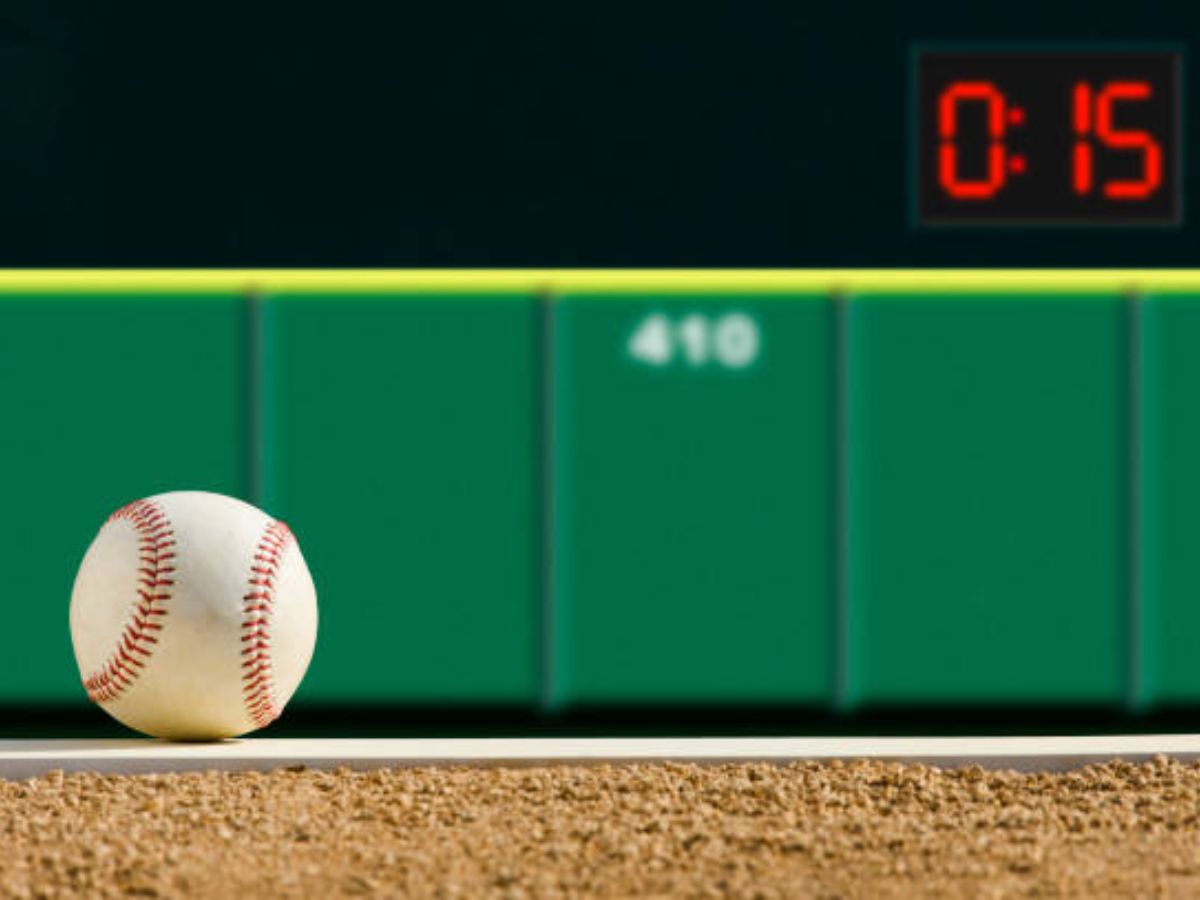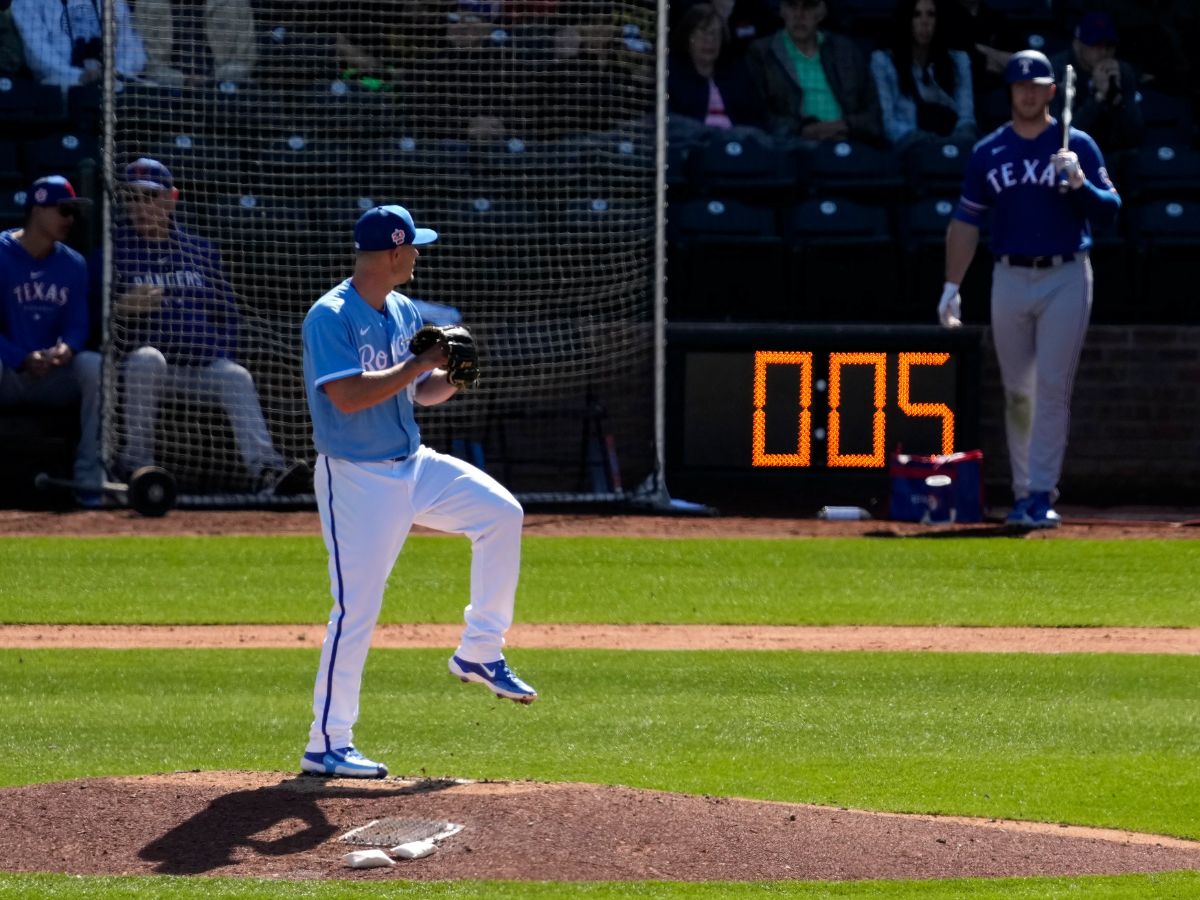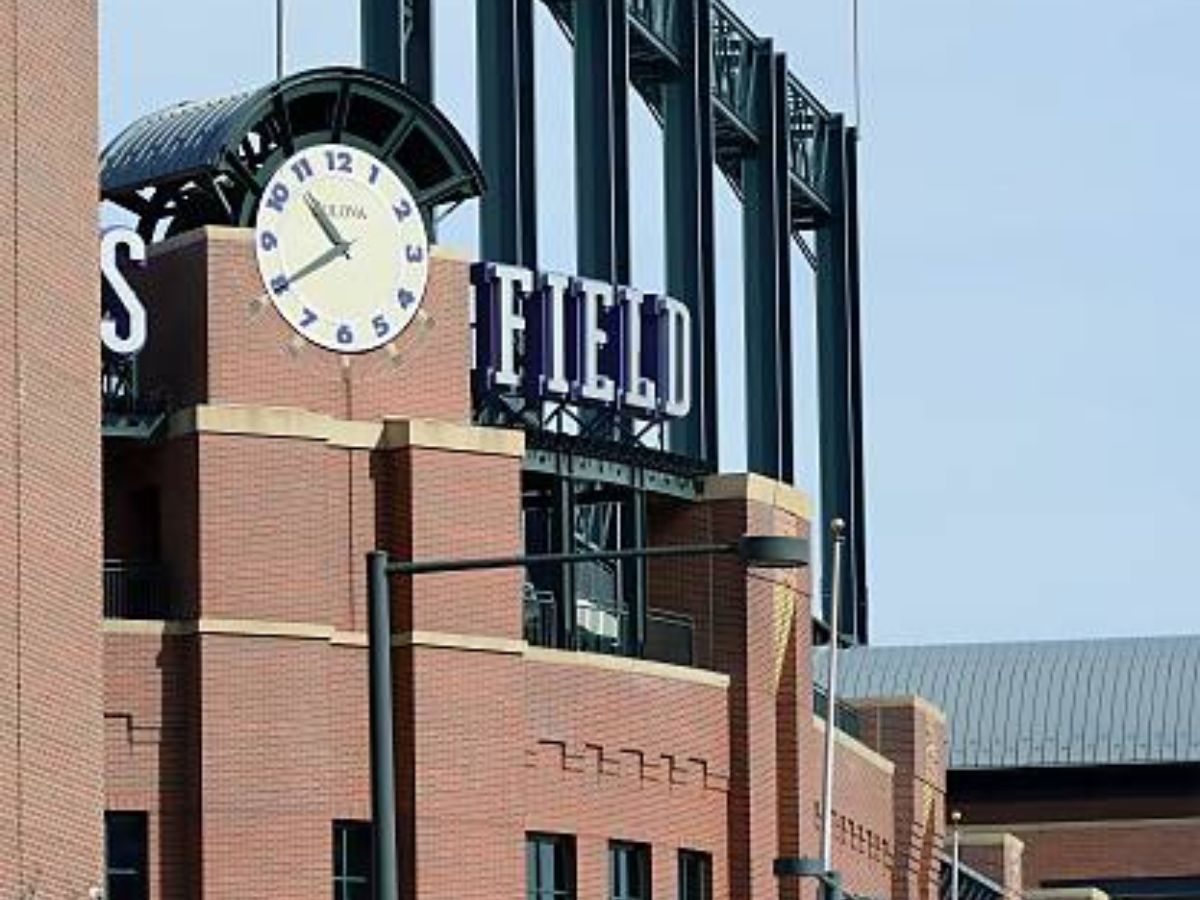A Pitch Clock is a time limit imposed on pitchers to deliver the next pitch. In baseball, a Pitch Clock is a time limit imposed on pitchers to deliver the next pitch.
It was introduced to ensure a faster pace of play and prevent delays during games. The clock typically counts down from 20 to 15 seconds, depending on the league and level of play. Once the clock reaches zero, the pitcher must throw the pitch or a violation is called, resulting in a penalty.

The use of Pitch Clocks has been implemented in various professional and amateur baseball leagues as a means to enhance efficiency and keep the game moving at a steady pace.
Contents Inside
The Purpose Of A Pitch Clock
A pitch clock is a tool used in baseball to regulate the pace of the game. It serves the purpose of keeping the game moving at a steady rhythm, without unnecessary downtime and delays. By enforcing a specific time limit for each pitch, players are encouraged to make faster decisions and speed up the overall gameplay.
This helps maintain the excitement and engagement of the audience, ensuring that the game doesn’t drag on for too long. Additionally, reducing downtime and delays allows for a more efficient and streamlined experience for both players and spectators. Ultimately, the implementation of a pitch clock aims to enhance the overall flow and tempo of the game, making it more enjoyable for everyone involved.
Understanding The Mechanics Of A Pitch Clock
The pitch clock is a countdown timer used in baseball games to enforce specific timing rules. It helps regulate the pace of the game, ensuring that pitchers and batters maintain a steady rhythm. The mechanics of a pitch clock involve setting a specific amount of time for the pitcher to deliver the pitch, usually around 20 seconds.
This timer starts as soon as the previous pitch is completed, and if the pitcher fails to deliver the ball within the allocated time, it results in a violation. However, there are exceptions and adjustments made for certain situations, such as when there are runners on base or if the pitcher has just entered the game.
Understanding the mechanics of a pitch clock is crucial for both players and fans alike, as it significantly impacts the pace and flow of the game.
The Impact Of A Pitch Clock On Pitchers And Hitters
A pitch clock, a stopwatch-like device, has caused significant changes in the game of baseball. Pitchers and hitters alike have had to adapt to the faster pace imposed by this clock. With the clock ticking down, pitchers must deliver their pitches more efficiently, which can impact their strategy and rhythm.
Hitters, on the other hand, need to quickly adjust to the shorter time frame, making split-second decisions and potentially altering their approach at the plate. Adapting to this faster pace requires both pitchers and hitters to develop new strategies for success.
Pitchers may focus on refining their delivery and pitch selection, while hitters may prioritize timing and being more aggressive early in the count. Overall, the introduction of a pitch clock has brought a new dynamic to the game, challenging players to adjust and perform under pressure.
Analyzing The Benefits Of A Pitch Clock
A pitch clock has become a popular tool in baseball to ensure timely gameplay. By implementing a pitch clock, the game duration is shortened, allowing for more efficient and fast-paced matchups. This change has a positive impact on fan engagement as spectators are more likely to stay interested and involved throughout the game.
The increased pace keeps the action moving, preventing lulls or downtime that can sometimes occur in longer games. This stimulates the audience’s excitement and enhances their overall experience. Additionally, a shorter game duration allows for more games to be scheduled, which benefits both fans and teams alike.
With a pitch clock in place, baseball games become more dynamic, engaging, and enjoyable for all involved.
Implementation Challenges And Solutions
Pitch clocks have become a contentious topic in baseball. Implementing them poses its fair share of challenges. One major obstacle is the resistance from players and coaches. They argue that the introduction of pitch clocks disrupts the natural flow of the game.
Concerns about the impact on strategies and pitching performance are also raised. However, there are solutions that can address these concerns. Providing ample time for players to adjust to the new system and educating them about the benefits can help alleviate their resistance.
Additionally, creating a gradual implementation process can ease the transition. It is crucial to listen to players’ feedback and make necessary adjustments based on their experience. By addressing their concerns and finding workable solutions, the implementation of pitch clocks can become a smoother and more accepted aspect of baseball.
Comparing Pitch Clock Rules In Different Leagues
A pitch clock is a term used in baseball to refer to a timer that regulates the pace of the game. Major League Baseball (MLB), Minor League Baseball (MiLB), and various international leagues have implemented their own rules regarding pitch clocks.
MLB introduced pitch clocks in 2015 as a way to speed up the game. Each pitcher has a set amount of time to throw the ball after receiving it from the catcher. If they don’t meet the time limit, a penalty is imposed.
MiLB also adopted pitch clocks to improve the pace of play in their leagues. These clocks have been successful in preventing unnecessary delays and keeping the game moving. International leagues have also experimented with pitch clock rules to find the right balance between maintaining the integrity of the sport and maintaining an engaging game for fans.
The Future Of Pitch Clocks In Baseball
Pitch clocks have become a hot topic in baseball, signaling the future of the sport. Professional leagues are expanding their usage, with potential adaptation in amateur and youth baseball. These clocks aim to speed up the game, ensuring that pitchers and batters adhere to specific time limits.
This innovation not only maintains the flow of the game but also keeps fans engaged. With pitch clocks, pitchers are encouraged to deliver their pitches promptly, while batters are kept on their toes, creating a more dynamic and action-packed experience.

By implementing pitch clocks at all levels of baseball, the sport can evolve and attract new audiences. It’s an exciting time for baseball as the future of pitch clocks looks promising in transforming the game.
Frequently Asked Questions Of What Is A Pitch Clock
What Is A Pitch Clock And How Does It Work?
A Pitch Clock is a timer used in baseball to regulate the time between pitches. It helps speed up the game and prevent delays. When the clock reaches zero, the pitcher must deliver the ball, promoting a faster pace of play.
Why Was The Pitch Clock Introduced In Baseball?
The Pitch Clock was introduced to address the issue of slow-paced games. By enforcing a time limit between pitches, it aims to keep the game moving smoothly and enhance the overall fan experience.
Does The Pitch Clock Apply To Both Pitchers And Batters?
No, the Pitch Clock only applies to pitchers. They are required to deliver the ball within a certain timeframe. Batters, on the other hand, have the freedom to step out of the batter’s box and take their time between pitches.
Can Pitchers Request A Timeout To Reset The Pitch Clock?
No, pitchers are not allowed to request timeouts to reset the Pitch Clock. Once the clock starts, they must deliver the ball within the designated time. Failing to do so may result in penalties or fines.
Conclusion
The pitch clock has revolutionized the game of baseball, introducing a new level of efficiency and excitement. Its implementation has ensured a faster pace of play, resulting in shorter game times and increased fan engagement. By establishing a specific time limit for pitchers, the pitch clock has encouraged them to work more efficiently, minimizing the time between pitches and reducing unnecessary delays.
This increased tempo has made the game more dynamic and captivating, captivating both die-hard fans and casual viewers. Moreover, the pitch clock has also had a positive impact on the overall experience for players and coaches, promoting better time management and strategic decision-making.
As the pitch clock becomes more prevalent across different levels of the sport, it will likely continue to shape the way baseball is played and enjoyed. The future promises an even more streamlined and enthralling game, driven by the innovation of the pitch clock.

